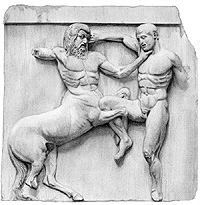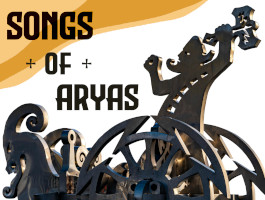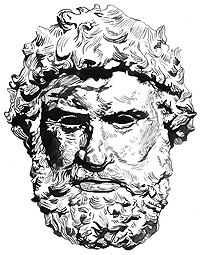1997, Simon and Schuster, NY, 908 pages
I have been reading and rereading this monumental work for nearly twenty years. The author made no inquiry what-so-ever into white slavery, as his focus was on the transatlantic trade, conducted primarily between Africa and Brazil by Portuguese, secondarily to the West Indies and Latin America by the Spanish, French and English, and lastly into North America by the English. Holding this together like a noxious glue is the shadow of a Dutch banking concern with ethno-religious roots that will give black nationalist and white nationalist conspiracy theorists something to wax hateful about, as prominent members of a certain people without a nation held key interests in the sale of white, black, brown and red, Christian, Heathen and Muslim, from Africa, to Morocco, to Venice, Amsterdam, London, and yes, Manhattan.
Most importantly, I will forever be indebted to Hugh Thomas for informing me that Muslim and English slave drivers, in Europe and Africa, driven their chattel to auction by overseers armed with a Peezal, which was a severed bull’s penis! The cruelty of Islamic slavers was by far the worst of all, as they forced English slaves to eat their own ears after they were cut off, and committed group emasculation by removing the testicles and penis of large numbers of men at the same time as only one in ten could survive the bleed out.
Hugh Thomas first traces the relatively humane practice of Roman slavery, which permitted slaves to marry and even become ordained priests, down to medieval England, where, in 1102, there is a complaint of boys from Bristol being sold to Irish masters “like beasts.” With Europe having been hunted as a slave market by Vikings from the north and Muslims from the east and south, the continent was never, at any time, free of outright chattel slavery, of ownership of one Christian European as a beast of burdern or sexual device that could be killed out of hand, by another Christian European, though Thomas does point out that this perversion of the ancient Roman custom was overshadowed by the slightly more limited form of enslavement known as serfdom.
The practice of chattel slavery [the most vicious of vicious institutions] was exasperated by Islamic-Christian warfare in which millions of slaves were captured on both sides. This was the origin of slavery being justified as the reasonable use of subhuman inferiors, not because of some deep seated prejudice against blacks by whites and Muslims of all shades, but because Christians and Muslims had a thousand year history of justifying the enslavement of “the damned,” of those without a soul by virtue of their adherence to a blasphemous faith.
Though Thomas’ focus is on the enslavement of Africans, he does supply many inadvertent mentions of white slaves held in American colonies. In his defense, any study of the transatlantic sale of Africans must not focus on America, as Brazil and Latin America were the big markets, markets that were established a century before and lasted a century after [in the case of Brazil] than the North American slave market.
One heroic English sea captain, much to the dismay of Africa slave traders, claimed that he could not buy a person for trade, as it was unchristian, even if the person was not Christian, it was enough that he ‘was formed like me.” Captain John Hawkins, however, was knighted for slave trading in African waters and took for his crest a negress.
The factors that triggered the preference for black slaves [who, Maryland planters at first rejected as being too expensive, although they claimed to prefer them as slaves over the unruly whites], among European Christians, although not enumerated in the following fashion in Mister Thomas’ book, are presented by him throughout the text, and arranged here by this reviewer:
1. It was preferable to own, as a beast of burden or sexual device, a person who was not Christian.
2. The various Islamic invasions of Europe had in effect “taught” human chattel management to Christians.
3. The Turkish conquest of Constantinople in 1453 cut off the supply of white slave girls from Russia to Spain, and thus forced the dons to develop a taste for black girls. Don Fornico went from rock and roll star to rapper in one year!
4. The ongoing crusades, jihads and raids between Christian and Muslim had conditioned most Christians to prefer owning non-Christian slaves.
5. American Indians lacked the immunity to Old World diseases and the slave-based social structures to thrive in captivity, and typically experienced a 90% die-off in the first generation of bondage.
6. Due to endemic warfare, river-based trading systems, and an ancient acceptance of slavery as a cornerstone of human society, Sub-Sahara Africa was an ideal slave market, featuring numerous pre-owned chattel, an efficient transportation system and motivate sellers. Indeed slavery is still openly practiced in parts of Africa, and numerous descendents of African American slaves such as Tariq Nasheed and Doctor Umar Johnson, have declared, on video, that African slavery, as practiced by Africans upon Africans in Africa, was morally tenable on the part of society and undamaging to the individual.
7. Portuguese navigators had successfully charted a depot system for the transAtlantic trade.
8. European banking institutions in Madrid, Genoa, Venice, Paris, Amsterdam and London were eager to invest in overseas commodities that were already in existence and in stock [at hand]. Where trees had to be cut, crops sowed and harvested, and mines mined, Scottish brats kidnapped, etc., African slaves were at hand, held in bondage by Africa princes eager to unload their human freight.
9. The sale of slaves on a scale that could not be tolerated among the domestic population, was desirable to English manufacturers, who would prefer to employ child labor at home, at less than the cost of maintaining a slave, enabling them to then buy an African slave, and then also sell the purchaser the sugar cane machete to be put in the slave’s hand as well as the very chains and cords to bind him, thus generating a value-added commodity.
The author's shrewdest insight was the fact that chattel slavery became increasingly more brutal with every increase in agricultural efficiency. This has always been the case with slaves sentences to mining details, which, in ancient Athens and Rome, was regarded as a certain death.
Elegantly written, with deftly selected period quotes and scrupulously footnoted, The Slave Trade is the standard text on the subject of Trans-Atlantic African enslavement and European and Islamic culpability.











